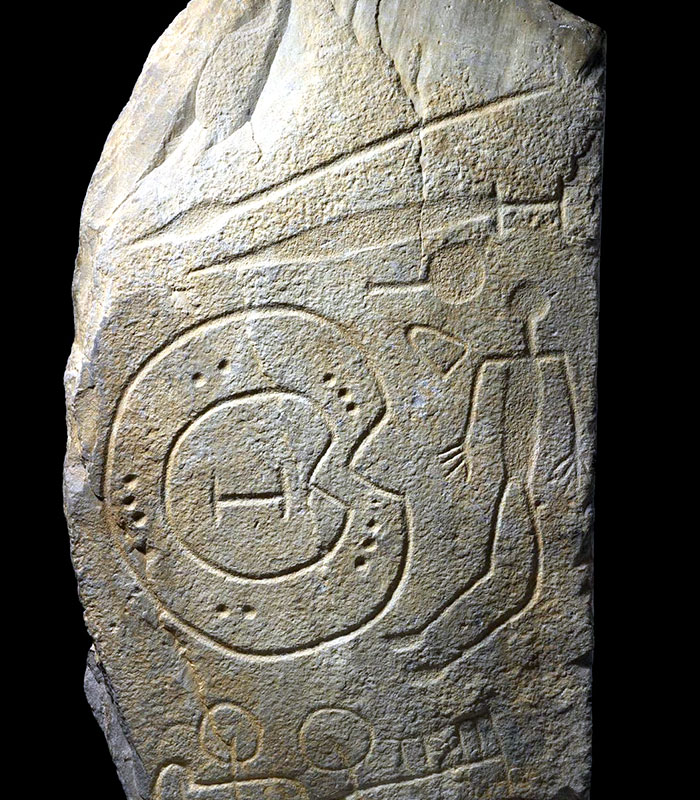If there is a genuine Bronze Age element in the southwest of the Iberian Peninsula, it is the so-called “decorated stelae”. Fashioned in blocks of stone of up to 2.30 metres, they are engraved on one side with schematic figures of men (and the accoutrements of war) and women (diademed and with their trousseaus). They have been discovered in various parts of El Alentejo and Extremadura, with those of the Geopark being among the most representative. Their purpose continues to be a great mystery; hypotheses include a funeral function or control of the territory.
Throughout the final stage of the Bronze Age in the southwest of the Iberian Peninsula engravings were frequently executed to represent warriors surrounded by their arms and various personal objects such as mirrors and combs, and women wearing diadems and other adornments. They are what is known as ‘warrior stelae’ and ‘diademed stelae’. Traditionally they were interpreted as being exclusively funeral elements, although nowadays this hypothesis is being questioned. After a succession of new discoveries they are now explained as signals in the landscape as evidence of the need of the society which created them to mark the control of the territory they occupied, albeit in a symbolic manner. Therefore, although their funeral connection is not ruled out, current research points to their being elements to ‘mark’ the landscape, either as border notices between territories or as milestones on roads of commercial exchange or drovers’ roads.
Two types of these artefacts are generally distinguished: on the one hand slabs, flat stones which must have been used as lids for cists (small individual megalithic funeral monuments) and on the other hand those known as proper stelae which were intended to be driven into the ground as milestones. The objects represented schematically together with the human representations (brooches, mirrors, swords, helmets, combs, carts…) indicate the existence of the first oriental influences.

